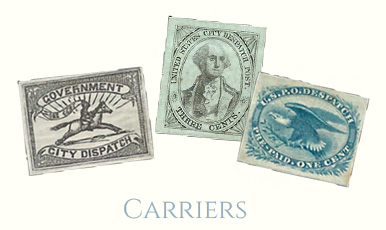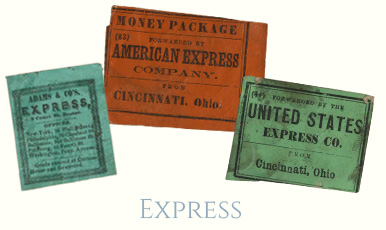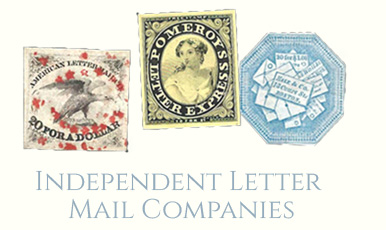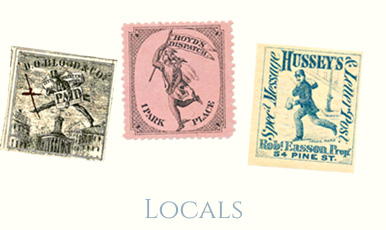American Stampless Cover Catalog
Volume II, Fourth Edition
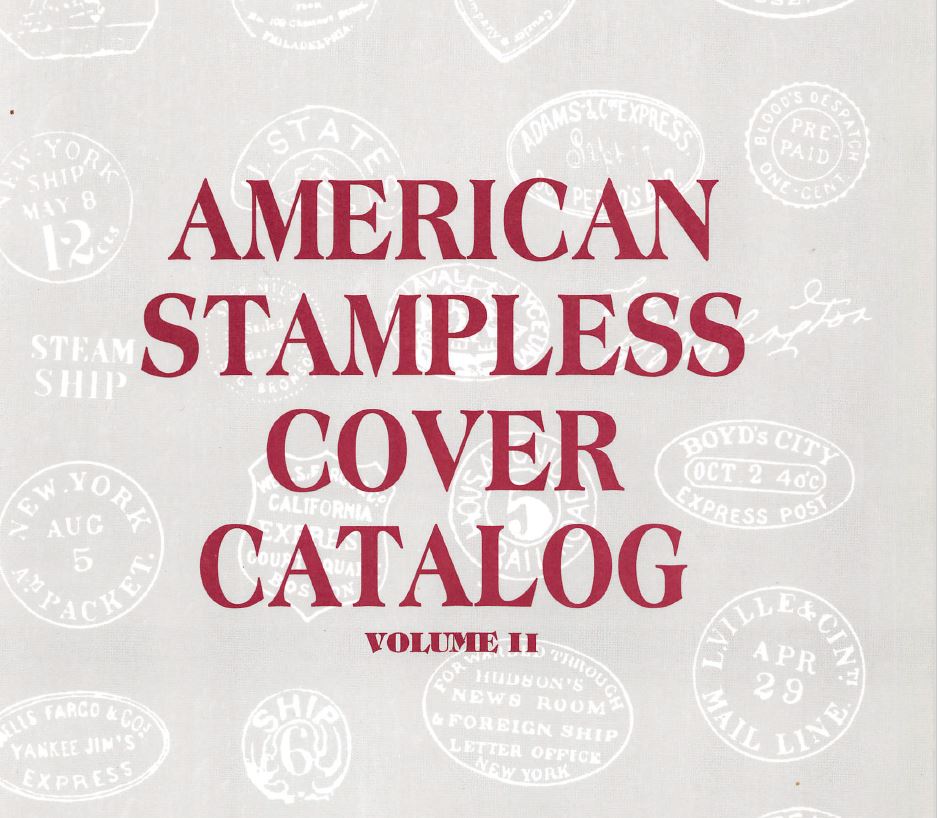
We are pleased to present a complete, searchable PDF of the American Stampless Cover Catalog, Volume II, Fourth Edition (1987), made available with permission from the United States Philatelic Classics Society. Volume II is of particular interest to the Carriers and Locals Society, as it includes markings from early local posts, express carriers, and independent mail services.
To view the ASCC Volume II, click the button below:
View ASCC Volume IIAn Introduction to the American Stampless Cover Catalog (ASCC)
The American Stampless Cover Catalog (ASCC) was published over several years from 1971 to 1997 in five editions by the David G. Phillips Publishing Co. The fourth edition (1987) expanded its scope to three separate volumes:
- Volume I is a compilation of stampless markings for all fifty states;
- Volume II includes private mail operations, city carriers, maritime and inland waterways mail, way and route agent markings, free franks, and other areas;
- Volume III primarily includes Confederate States of America and colonial markings.
Hubert Skinner was the Senior Editor under Editor David Phillips who was responsible for the private letter mail and express carriers sections and the local city delivery post marking sections which are of most interest to Carriers and Locals Society members. As editor, Skinner pointed out that the origins and definitions of many markings are incompletely understood, and that their classification and arrangement of the markings presented some difficulties. In many cases of private companies, few or even a single cover is known, and often little is known about the proprietor, dates of operation, or other details, unlike United States mail for which regulations were publicly available. Over the years, the Carriers and Locals Society has printed many articles that clarify these ambiguities and readers are referred to our PDF downloads of searchable issues.
The United States Philatelic Classics Society acquired ownership of the ASCC from the publisher in 2005 and, as of this writing, is currently expanding the scope of the catalog. The new version will be called the American Postal Markings Catalog and will include postal markings recorded for both stampless and stamped covers through June 1, 1861.
The Carriers and Locals Society has also begun a project to revise and update those sections of interest to our readers. Your input is invited; please contact Cliff Alexander.
Introduction to the Carrier Markings
Benjamin Franklin and William Hunter were appointed Deputy Postmasters in 1753. The same year they issued instructions that authorized postmasters to employ persons “to deliver Letters aforesaid, to receive of the Persons to whom he delivers them, for his own Use, One English Copper Halfpenny for each Letter, over and above the Postage charged thereon.” During the Constitution Period, the Postmaster General required postmasters to obtain approval before hiring a carrier. Robert Stets recorded eleven cities that received approval to hire carriers before 1809. (See “Penny Posts in the U.S. Before 1809,” The Penny Post, July 1993, pp. 4-12)
Prior to the 1840’s, evidence of carrier service depended on whether the rate marked on a cover included a carrier fee or the fee was noted separately on the cover. In the 1840’s, carriers began applying their own handstamps and issuing adhesives for prepayment of the carrier fee.
The Postal Act of March 3, 1863, abolished carrier fees effective July 1, 1863, and carriers received salaries paid by post offices. From July 1, 1863, until April 30, 1865, the postage to mail a letter was 2¢, regardless of whether it was inter-city, an intra-city carrier delivered letter or a drop letter. However, Congress only authorized carrier service in large cities. Cities without carrier service complained and effective May 1, 1865, Congress amended the law to lower the cost for drop letters to 1¢ in cities without carrier service.
Carriers performed four services: (1) delivered letters from the post office to residents; (2) delivered letters from patrons to the post office for transmission to other cities; (3) delivered letters within cities; and (4) delivered letters to the post office for pickup by local addresses. Markings are listed below alphabetically by city.
Introduction to Independent Letter Mail Companies
Independent letter mail companies were private enterprises that directly competed with the post office by carrying private and business letters between cities between 1840 and 1845. Most were in the northeast United States and included companies such as the American Letter Mail Company (established by postage reduction activist Lysander Spooner), Hale & Company, which had over one hundred offices, and Pomeroy’s Letter Express. Several companies issued adhesive postage stamps.
These and other companies advertised in newspapers that they were the “people’s” postal services. The independent letter mail companies were popular because they introduced several reforms that the federal government had ignored: lower rates; more frequent collection and delivery service; prepayment with stamps; and quantity discounts for stamp purchases.
Independent mail companies carried letter and business mail over railroads, steamships, and other public or private conveyances via “post roads” until expressly prohibited by the Postal Act of 1845, effective 1 July 1845, which levied heavy fines for violations. In a few cases, independent letter mail companies such as Overton & Co. also delivered mail to local addresses for an additional fee and thus overlap with the private local (intracity) posts.
Parcel express companies carried merchandise, money letters, and/or packages between cities, beginning with the early stagecoach lines and expanding with the advent of railroads. Adhesive labels were often used and can be found on envelopes associated with packages or money letters. Postal regulations generally limited the carriage of letter mail to those dealing with the parcels, bills of lading, bank drafts and notes, legal documents, or newspapers.
The distinction between independent letter mail companies and private expresses is sometimes not clear. Private parcel express companies sometimes carried letter mail, and such postmarks are included in this section.


